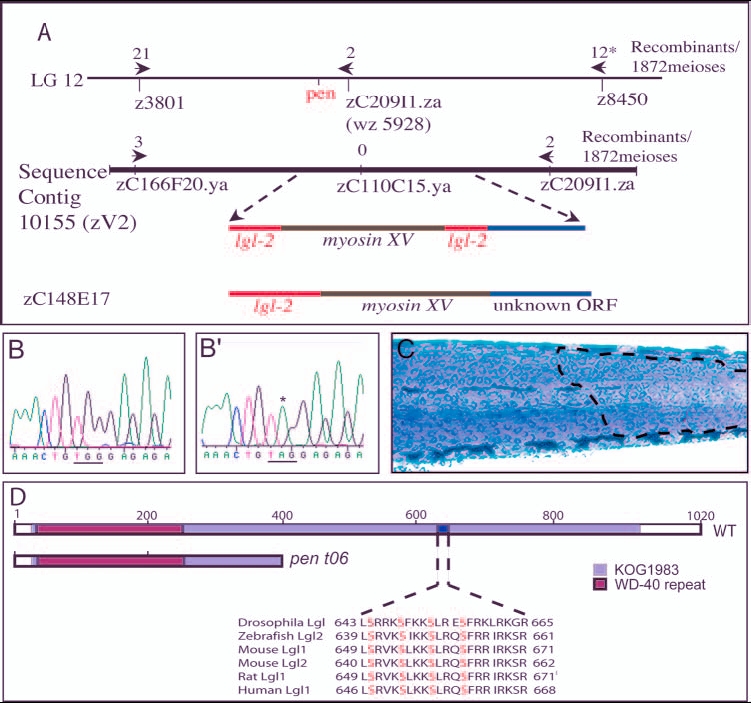Fig. 4 penner is the second zebrafish orthologue of D-lgl and is expressed in the basal epidermis. (A) pen maps in between SSLP markers z3801 and z8450 on linkage group 12. A BAC (zC209I1.za) that maps very close to pen also maps on sequence contig 10155 (zV2). pen shows tight linkage with a SNP marker present in zC110C15.ya (0 recombination). This region harbours putative myosin XV flanked by partial sequences homologous to lgl2. BAC zC148E17 maps to the same region and sequence analysis of this BAC revealed the presence of an uninterrupted lgl2 sequence. (B-B') The partial sequence of lgl2 from wild-type (B) and mutant (B') larvae. Asterisk in B' indicates the transition event leading to conversion of a codon for Trp (TGG in b) into a stop codon (TAG) in mutant. (C) pen mutant larvae injected with BAC zC242O17 containing wild type lgl2 and stained for keratin. BAC injections result in the partial rescue of pen mutant phenotype, as indicated by the presence of wild-type polygonal cells (marked by broken line) next to rounded up and loosely organised mutant cells. (D) Schematic of wild-type Lgl2, depicting WD-40 repeat and KOG 1983 domain. The sequence between amino acids 639 and 661 contains aPKC phosphorylation sites (serine residues in red) and is similar or identical to that in Drosophila Lgl, and Lgl 1 and Lgl2 of mouse, rat and human. There is a partial loss of KOG 1983 domain and a lack of aPKC phosphorylation sites in the pent06 allele. Asterisk indicates 776 meioses were analysed with SSLP marker z 8450.
Image
Figure Caption
Acknowledgments
This image is the copyrighted work of the attributed author or publisher, and
ZFIN has permission only to display this image to its users.
Additional permissions should be obtained from the applicable author or publisher of the image.
Full text @ Development

